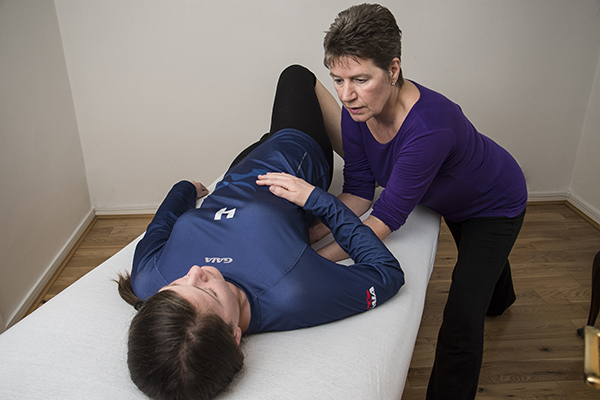Deputy editor Yvonne Martin seeks out some relief from muscle tension, aches and pains with the decades old technique that works on your fascia.
‘Would you like to sleep on a firm bed? On a lilo floating on a swimming pool? On a waterbed?’ The question is posed not to me, but to my right shoulder blade.
I’m having a Rolfing session with therapist Vivien Skelton, who is cradling my shoulder blade in her hands as she asks the questions and tunes in to my body’s responses.
As the muscles soften in response to her words and the supportive hold, it seems that my right shoulder blade favours a waterbed. ‘I’m not sure I’ve ever even tried one of those out,’ I tell her, but that doesn’t matter. Vivien explains that it’s simply a way of going directly to my body to find out what it needs, how it wants to feel and to allow it to let go. Gradually my muscles start to relinquish some long-held tension.
What is Rolfing?
Rolfing is a technique devised in the 1960s by Ida Rolf, and it works on the fascia – the connective tissue that covers your entire body.
The aim is to improve freedom of movement and flexibility, align your posture better and reduce your aches and pains.
Look it up online and you’ll find that it has been described as a painful process by some. So when I turn up at Vivien’s treatment space in Lichfield, while hopeful that it will bring some ease to my body I’m also a little anxious. I mention this and Vivien says this hadn’t escaped her notice. I needn’t have worried though as it wasn’t painful for me.
Checking in with my body
 The session begins with Vivien taking stock of my posture and movement while I stand and walk and sit (in my underwear) in her treatment room. I feel under scrutiny – albeit a very professional and sensitive sort of visual scan – and this, coupled with standing around in my underwear feels a little awkward.
The session begins with Vivien taking stock of my posture and movement while I stand and walk and sit (in my underwear) in her treatment room. I feel under scrutiny – albeit a very professional and sensitive sort of visual scan – and this, coupled with standing around in my underwear feels a little awkward.
But Vivien is kindness itself and once the hands-on treatment begins I see why she was keen to point out that it is not a massage. It feels different. Later, Vivien shows me the movement she was doing and it looks very different to what it felt like.
A 10-step course
I’m there for just one session to try it out, but usually clients would take a series of 10, spaced anything from a week to a month apart, which follow a particular sequence. Sometimes a Rolfing practitioner will give the client ‘homework’ to do in between visits. After that, they can go back for top-ups as and when they need it.
After my session my body felt pleasantly looser and much less tense. Vivien was passionate about her work and seemed to very much want to help people through their physical difficulties.
Find one that’s right for you
I would say, as with any personal therapy, it’s important to trust and feel comfortable with the practitioner so this would be an important consideration for anyone trying out Rolfing.
I would consider going back for more treatments, but Vivien is not local to me, so the stressful motorway drive might not make it as relaxing an experience as I would like. It may not be able to solve all my physical aches, pains and restrictions, but from my own experience it certainly felt like an attentive and sensitive physical therapy, that has potential for bringing much more ease to my body.







